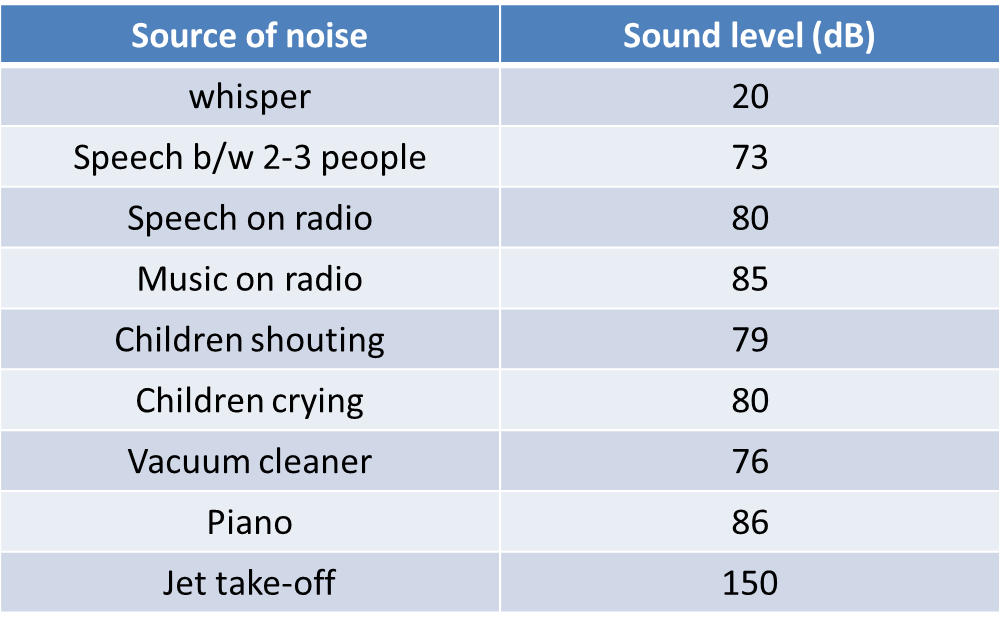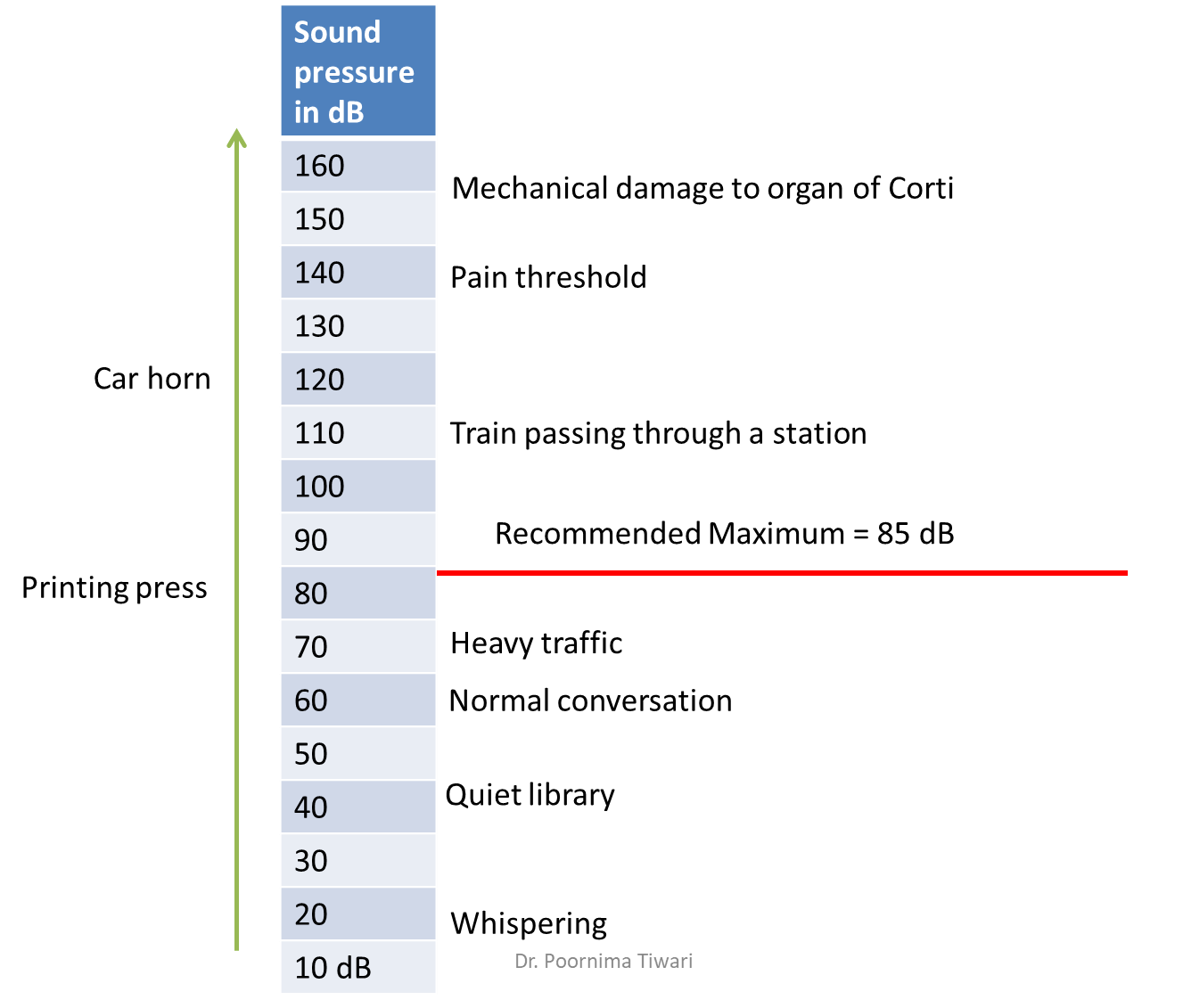• NOISE- Unwanted sound
• Come to be a major “stress factor” in today’s life
– Noise Pollution = unwanted or excessive sound that can have damaging effects on human health,
• Sources of noise are varied:
– Automobiles
– Factories
– Air crafts etc.
• Levels particularly high around:
– Railway junctions,
– Bus depots
– Airports
– High Traffic areas etc.
• Noise has 2 characteristics:
1. Intensity or loudness
2. Frequency
1. Intensity (Loudness)
– Measured in decibels (dB)
– 60 dB sound means, 60 dB more intense then the lowest discernible noise (=reference)
• dBA is used instead of dB in case of human hearing as human responds not to the REAL loudness but to a PERCEIVED intensity.
• dB (A) denotes the perception of sound by the normal human ear
• dBA is calculated by ‘A’ using A weighted curve k/a ‘curve A’ which has been constructed to take into account, the subjective effect of the sound on a normal ear
2. Frequency:
– Measured in Hz
– Human ear can identify 20 to 20,000 Hz
– < 20 Hz = infra-audible
– > 20,000 Hz = Ultra-sonic
– Some animals can hear sounds inaudible to human ear
– Phon: is an index of intensity whilst also taking into account, the frequency
Some Everyday Sound Levels
Acceptable Levels of Noise
Cut-off levels of sounds
Instruments used in Studying Noise
1. Sound level meter:
– Measures intensity of sound in dB or dBA
2. Octave band frequency analyzer:
– Measures noise in octave bands
– Creates a plot showing the ‘sound spectrum’
– Indicates the characteristics of the noise
• Mainly high pitch
• Mainly low pitch or
• Variable pitch
3. Audiometer:
– Machine used for evaluating hearing capability
– Zero line at the top of audiogram represents normal hearing.
– Noise induced hearing loss shows a characteristic dip in the curve at the 4000 Hz frequency
Health Effects of NOISE
1. Auditory
2. Non – Auditory
Auditory effects
Auditory fatigue: whistling and buzzing in ears
• Appears at 90 dB and affects most the frequency of 4000 Hz
Deafness or hearing loss
• Victim usually unaware esp. initial stages
• Temporary/ permanent
Temporary hearing loss
• Exposure to one episode of loud noise
• Disappears after some time (up to 24 hr.) following the exposure
• Most affected frequency: 4000 – 6000 Hz
Permanent hearing loss
• Repeated /continuous exposure to 100 dB
• Occupational hearing loss is due to this
• Exposure to > 160 dB may even rupture the tympanic membrane
Non – Auditory Effects of Noise Exposure
• Interference with speech: speech level needs to exceed ambient sound by 12 dB
• Annoyance
• Efficiency reduction
• Physiological changes
– Stress hormones
– Rise in BP
– Rise in intracranial pressure
– Increase in heart rate
– Interference in sleep
Economic loss
– Less productivity: reduced efficiency, workers in noisy conditions have been found to be more irritated, short fuse and quicker to agitate and halt production
– Occupational health claims to industry
Control of Noise Pollution
1. Cautious planning of cities
– Separate industrial and transport zone
– Separation of residential areas from main streets by green belts
– Houses not < 15 m from main street, thick plantation
– Widening of main streets
2. Control of vehicles
– Heavy vehicles not allowed in narrow streets
– Prohibit indiscriminate blowing of horn
Reference
• Park’s Textbook of PSM. 25th ed. 2019 Bhanot Publishers, Jabalpur
• Mathias Basner, Wolfgang Babisch, Prof. Adrian Davis, Mark Brink, Charlotte Clark, Sabine Janssen, Prof. Stephen Stansfeld Auditory and non-auditory effects of noise on health .Lancet. 2014 Apr 12; 383(9925): 1325–1332
• Stephen A Stansfeld and Mark P Matheson. Noise pollution: non-auditory effects on health British Medical Bulletin 2003; 68: 243–257
